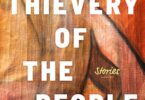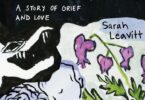By Dorothy June Fraser
Bitter Lamentations from Adam Wojtowicz on Vimeo.
Adam Wojtowicz is a Vancouver-based artist who works in a variety of media.
Over the past decade, he has been involved in the Vancouver film scene, as well as the larger Canadian entertainment industry. In his creative transition from the commercial film industry to an independent mode of production, he has explored painting and animation, in addition to screenwriting and filmmaking.
Exploring narrowly-defined masculinities, he informs visual narratives from experiences of family, immigrant identity and conformity.
Catholic influences of his family in Poland have been inseparable from his cultural identity, and ultimately his position as a queer artist. Wojtowicz states that, as a child and young adult, he was “perpetually working to pass,” and that this has been a major developmental factor in his oeuvre. His work is mainly concerned with decentering historical constructions of masculinity that work to instill heteronormative values and enthrone the authoritative male voice present in society.
Speaking of his family, childhood and “acceptable” presentations of masculinity, Wojtowicz remembers relatives, condemnations and silence, as well as instances in which glorified misogyny became apparent:
“My first experience of my heritage with the Catholic church was during an Easter mass with my maternal grandmother who was visiting our Ottawa home from Warsaw. She spent the days approaching the Sunday service telling me about the joys of the church, filling my head with images of this really cool place where everyone was nice and super friendly and in a really great mood. These are the kinds of places I liked. When we went to the service, I asked my grandmother if I could be excused to dance in the aisles along to the music. She pinched me to be quiet, and I began to cry, stubbing my mind for the first time against the divide that falls between the theoretical and practical experience of organized religion. Pointing at the cross, she told me, ‘Być grzeczny i cicho jac Chrystos,’ be good and quiet like Christ…
“In 1994, when the second installment of Krzysztof Kieślowski’s Three Colours trilogy was released, my family gathered the few Polish immigrants we knew around the VCR and watched. This was one of the few representations of a Polish masculinity that would stand out for me. Karol Karol in Trzy kolory: Biały (Three Colours: White) is a rather pathetic man who is cast aside by his far-more-interesting French wife and then goes on a mission of revenge. There is violent misogyny performed in this identity that I am working to resist.”
His new work, Bitter Lamentations, is part of a series of experimentations between Wojtowicz and Oslo-based contemporary dancer, Ingrid Sørensen. Meeting over the internet and collaborating through a series of movement designs, the two created the Lamentations. Wojtowicz paired the animation with the hypnotic soundscape of the Warsaw ZMT (the public transit system) and the opening of the Gorzkie żale (The Bitter Lamentations), which are sung in 5 parts at the services during Lent. This locates the prostrations of the figure within mystical and industrial soundscapes that imply the immanence of the human form and powerful trappings of cultural normativity.
“For me, the Bitter Lamentations are a small expression of the desire to escape a constructed body that is to me at once attractive and repulsive, as an object of queer desire and an object of self loathing. The misogyny of my gender is often compounded in male-identified queer spaces. This violence is encoded and performed in male gender identity. In searching for a non-violent masculinity, the old performances of maleness must self-destruct … As an out queer adult, Poland has become this locus of queer anxiety for me. In returning to Warsaw, the great privilege of living in a liberal community is exposed. I enjoy a level of safety and acceptance in my community in Vancouver that I have always taken for granted. In immersing myself in the current culture in Warsaw, I cannot help but wonder if I will be forced to erase my identity, or even my own body? Will I slip into the very historical palimpsest which I am working to expose?”
Wojtowicz departs from film to use animation as a vehicle for independent expression, offering his viewers a visual field constructed from his collaborations with Sørensen. Although he has generally used animation to enhance his film work, this short animated piece breathes on its own and conveys narrative voice and power(lessness) in the face of the subject’s bitter lamentations. Wojtowicz’ refusal of the misogyny inherent in normative masculinity allows his feeling and the rejection of conventional expectations of masculine expression to saturate the faceless figure we see prostrating himself against the cavernous, reverberating noise of the Warsaw transit system.
By moving the unidentifiable and malleable figure through spiritual and emotive transcendence, Wojtowicz enables the viewer to reject normative, clearly-defined, stay-seated masculinity. Wojtowicz is offering us the bitter lamentations of his unknown, inconsolable subject by exposing the critical need for expression outside oppression.
His work dismantles “masculine” misogyny and its dichotomous existence in relation to Christ-like quietude that silences queer ecstasy and desire.
Wojtowicz’ deviation from heteronormative desire invites the viewer to design alternatives to standard cultural models of stories and their structures. These alternatives have often been expressed as queer alternative histories that transform and, therefore, queer the accepted historical narratives present in our contemporary culture. Wojtowicz weaves historical figures into evocative, surrealistic narratives through multimedia visual meditations. Included in these narratives are Wojtowicz’ Ulam’s Spiral series of paintings, which combine modernist violence with work of renowned physicist Stanislaw Ulam. His films include Baltimore, which explores the death of Edgar Allen Poe, and the shattering of his romanticized image of his beloved child-bride and Felpham, a film about William Blake’s brilliant wife Catherine and her wild lover. Adding to his repertoire of interpretation and experimental work is Homme, a modern dance piece about the trappings of 20th century masculinity.





